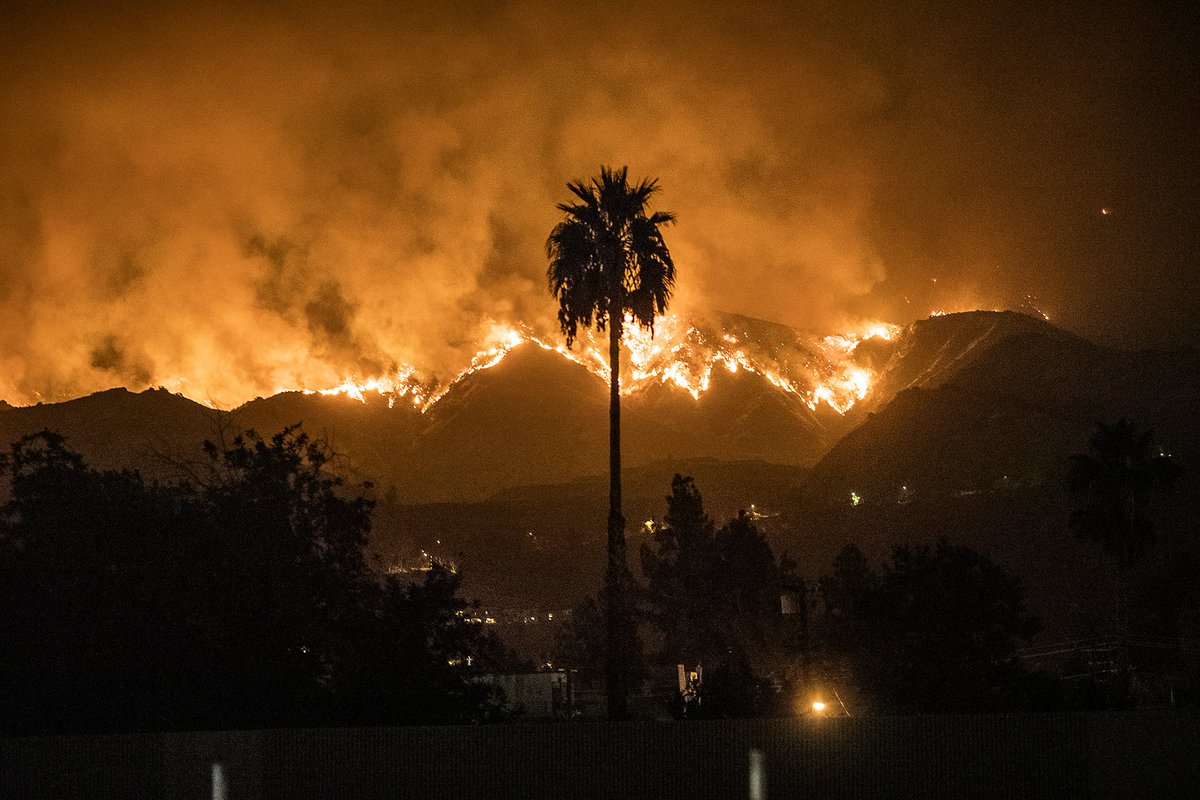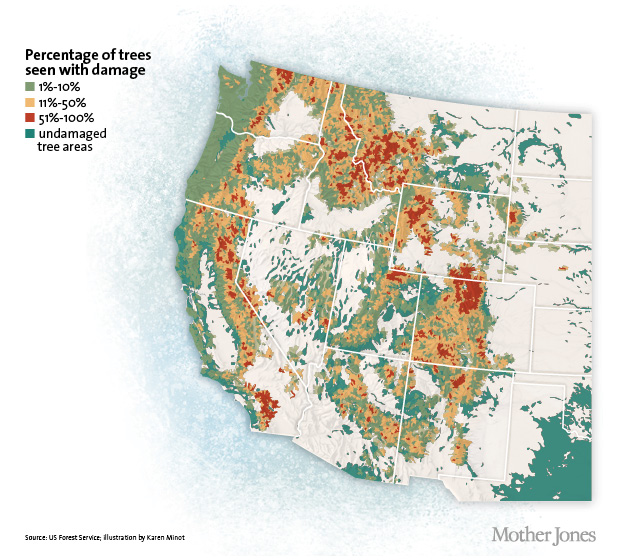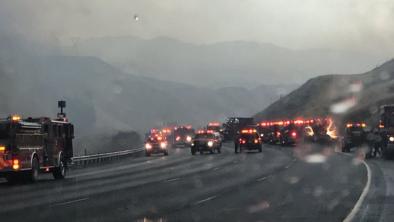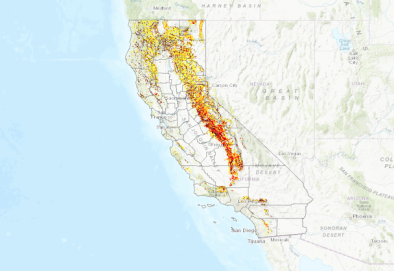La Tuna Fire September 2017
Higher temperatures and drier conditions—both linked to climate change—are increasing wildfire risk in California.
The La Tuna Fire erupted north of downtown Los Angeles and, at more than 7,000 acres, the fire is the largest to burn within Los Angeles' city limits.[2]
While small compared to the biggest fires in California's history,[1] the La Tuna Fire is notable for its proximity to a major city and its rapid growth amid unseasonably warm temperatures. The fire also erupted at the edge of the Angeles National Forest, a region where bark beetle activity has increased in recent years of extreme heat and drought.







Climate science at a glance
- The La Tuna fire began amid "the greatest statewide heat wave ever recorded in California."
- La Tuna is the largest fire to burn within Los Angeles' city limits.
- In southern California, weather conditions (e.g. unusually hot local temperatures) are the primary driver of the size of summer fires.[1]
- 13 of California's 20 largest wildfires on record have all burned since 2000.[2]
The La Tuna fire erupts amid extreme state-wide heat wave
 The La Tuna Fire ignited September 1 in the Verdugo Mountains amid what one weather historian described as "the greatest statewide heat wave ever recorded in California."[3]
The La Tuna Fire ignited September 1 in the Verdugo Mountains amid what one weather historian described as "the greatest statewide heat wave ever recorded in California."[3]
Days of triple-digit heat in southern California helped fuel the fire, which burned over 7000 acres and was 70 percent contained as of September 5.[4][5]
Los Angeles Mayor Eric Garcetti and LA fire chief Ralph Terrazas described La Tuna as the largest fire to burn within Los Angeles' city limits. More than 700 homes were evacuated as the fire expanded in the Verdugo Mountains just four miles north of downtown Burbank.
Extreme heat and drought have been major contributors to the severe wildfire season unfolding across the Western US.[3]
Increasing temperature and drought risk are linked to climate change
The southwestern United States has already begun a long-predicted shift into a decidedly drier climate.[6] Extreme heat and years of ongoing drought, both linked to climate change, are increasing wildfire risk in California by contributing to the frequency and severity of wildfires in recent decades.[6]
A study of southern California wildfires has found that weather conditions (e.g. unusually hot local temperatures) are the primary driver of the size of summer fires.[1]
Observed changes in California's climate towards drier conditions and warmer temperatures help to explain why 13 of the states's 20 largest wildfires on record have all burned since 2000.[2]
Drought and extreme heat have increased California's bark beetle populations, causing tree mortality and increasing fire risk
 California bark beetles consume, survive in, and ultimately kill trees facing stressors such as years of drought (see California Drought 2011 - 2016) and extreme heat. When trees die from beetle infestation, they become fuel for wildfires.
California bark beetles consume, survive in, and ultimately kill trees facing stressors such as years of drought (see California Drought 2011 - 2016) and extreme heat. When trees die from beetle infestation, they become fuel for wildfires.
An increase in the number of dead and dying trees exacerbates the wildfire threat.[7] An estimated 102 million trees (as of November 2016) have died in California due to the state's five-year dry spell and bark beetle infestation.[8]
The 2015 California Forest Health Highlights Report found that drought-stricken and fire-damaged trees fueled bark beetle outbreaks of epidemic proportions in areas of coastal and southern California, as well as throughout the central and southern Sierra Nevada range.[9]
Related Content






